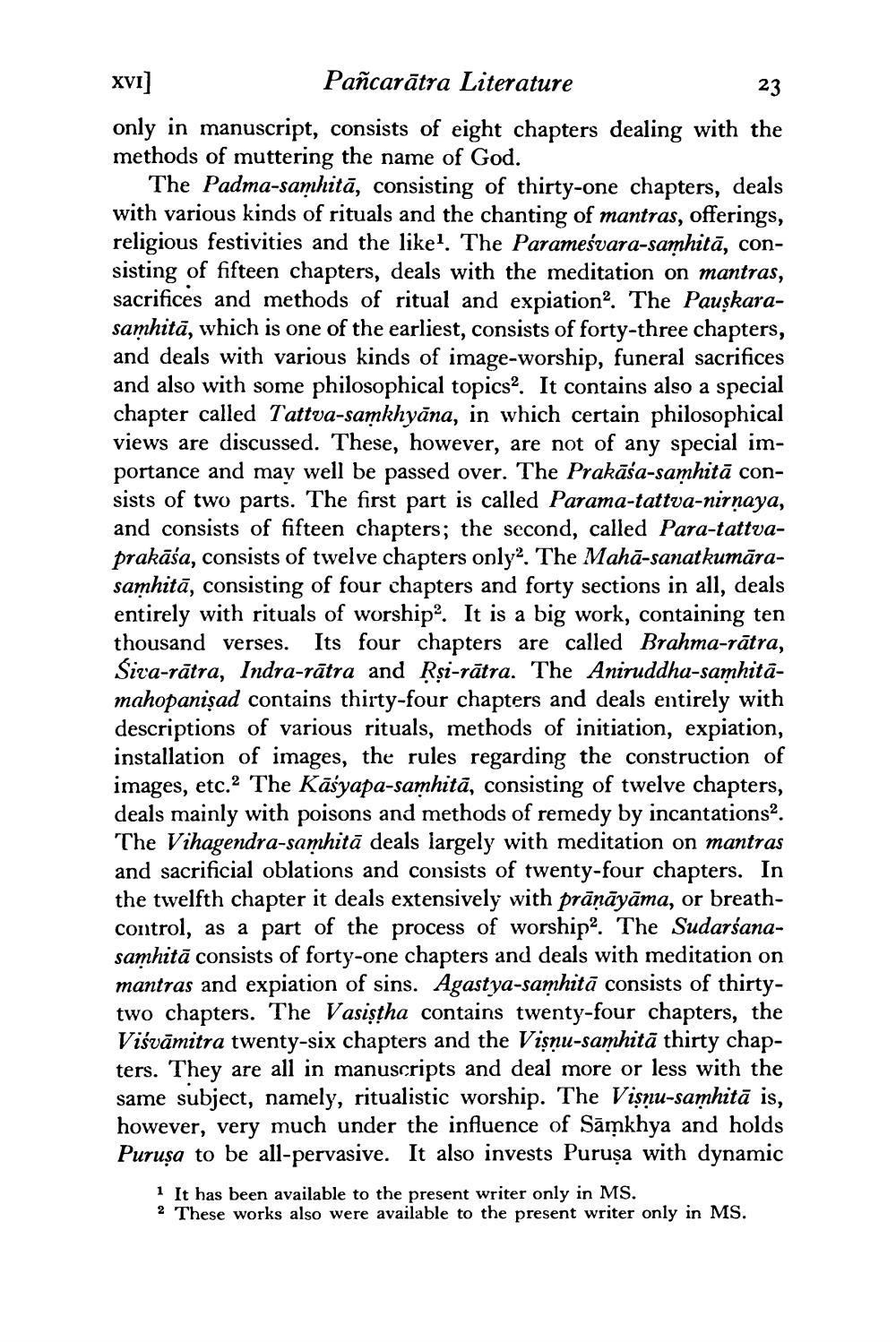________________
XVI]
Pañcarātra Literature
23
only in manuscript, consists of eight chapters dealing with the methods of muttering the name of God.
The Padma-samhita, consisting of thirty-one chapters, deals with various kinds of rituals and the chanting of mantras, offerings, religious festivities and the like1. The Paramesvara-samhită, consisting of fifteen chapters, deals with the meditation on mantras, sacrifices and methods of ritual and expiation2. The Pauskarasamhita, which is one of the earliest, consists of forty-three chapters, and deals with various kinds of image-worship, funeral sacrifices and also with some philosophical topics2. It contains also a special chapter called Tattva-samkhyāna, in which certain philosophical views are discussed. These, however, are not of any special importance and may well be passed over. The Prakāśa-samhitā consists of two parts. The first part is called Parama-tattva-nirnaya, and consists of fifteen chapters; the second, called Para-tattvaprakāśa, consists of twelve chapters only2. The Mahā-sanatkumārasamhita, consisting of four chapters and forty sections in all, deals entirely with rituals of worship. It is a big work, containing ten thousand verses. Its four chapters are called Brahma-rātra, Siva-rātra, Indra-rātra and Ṛṣi-ratra. The Aniruddha-samhitamahopanisad contains thirty-four chapters and deals entirely with descriptions of various rituals, methods of initiation, expiation, installation of images, the rules regarding the construction of images, etc.2 The Kasyapa-samhita, consisting of twelve chapters, deals mainly with poisons and methods of remedy by incantations2. The Vihagendra-samhitā deals largely with meditation on mantras and sacrificial oblations and consists of twenty-four chapters. In the twelfth chapter it deals extensively with prāṇāyāma, or breathcontrol, as a part of the process of worship2. The Sudarsanasamhita consists of forty-one chapters and deals with meditation on mantras and expiation of sins. Agastya-samhitā consists of thirtytwo chapters. The Vasistha contains twenty-four chapters, the Visvamitra twenty-six chapters and the Visnu-samhita thirty chapters. They are all in manuscripts and deal more or less with the same subject, namely, ritualistic worship. The Visņu-samhitā is, however, very much under the influence of Samkhya and holds Puruşa to be all-pervasive. It also invests Purușa with dynamic
1 It has been available to the present writer only in MS.
2 These works also were available to the present writer only in MS.




